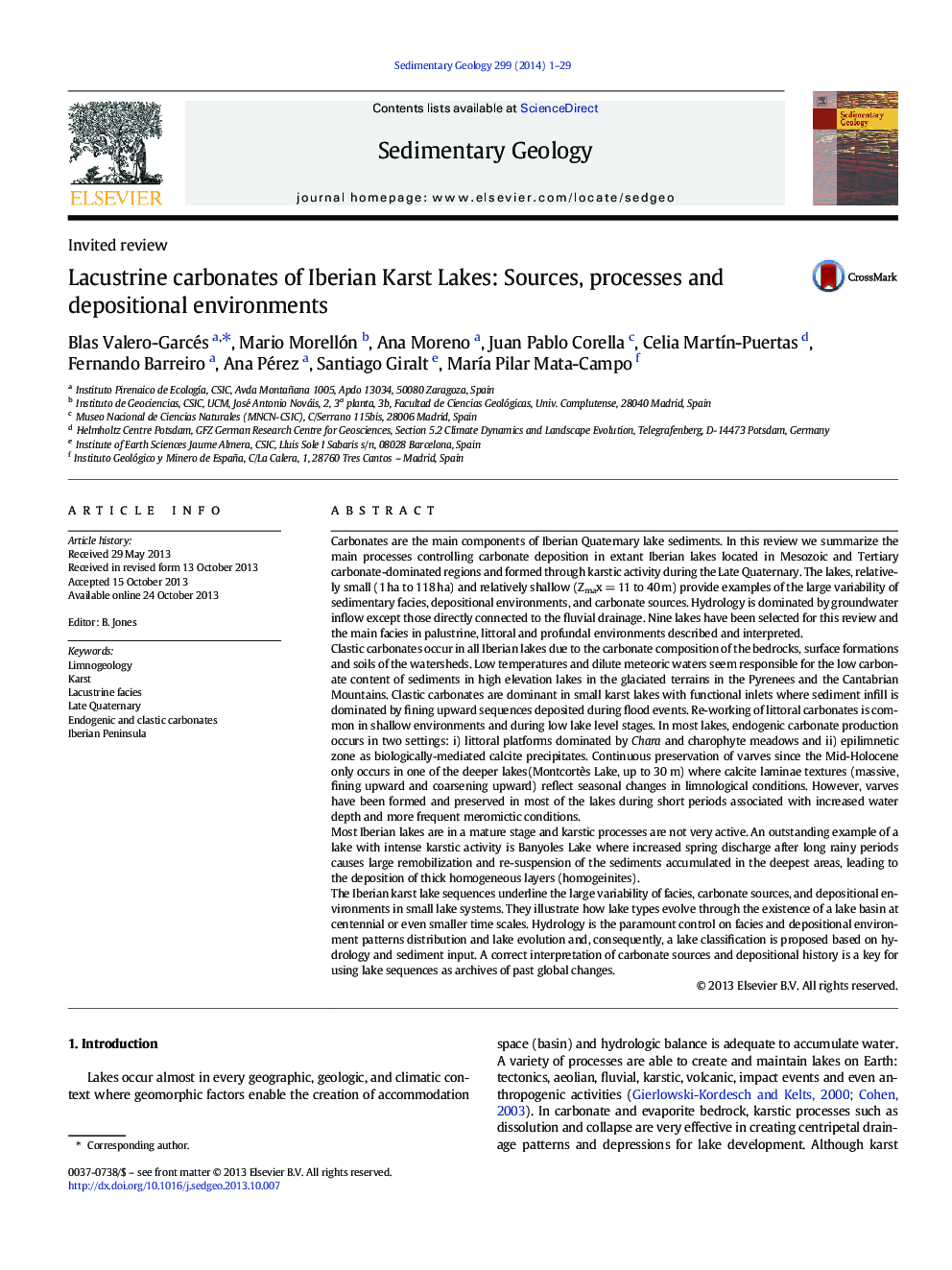| کد مقاله | کد نشریه | سال انتشار | مقاله انگلیسی | نسخه تمام متن |
|---|---|---|---|---|
| 4689488 | 1636064 | 2014 | 29 صفحه PDF | دانلود رایگان |
• Large facies, sources and environments variability in small lake systems
• Lake types evolve at centennial or even smaller time scales.
• Hydrology is a main control on facies and environment distribution and evolution.
• We propose a lake classification based on hydrology and sediment input.
Carbonates are the main components of Iberian Quaternary lake sediments. In this review we summarize the main processes controlling carbonate deposition in extant Iberian lakes located in Mesozoic and Tertiary carbonate-dominated regions and formed through karstic activity during the Late Quaternary. The lakes, relatively small (1 ha to 118 ha) and relatively shallow (Zmax = 11 to 40 m) provide examples of the large variability of sedimentary facies, depositional environments, and carbonate sources. Hydrology is dominated by groundwater inflow except those directly connected to the fluvial drainage. Nine lakes have been selected for this review and the main facies in palustrine, littoral and profundal environments described and interpreted.Clastic carbonates occur in all Iberian lakes due to the carbonate composition of the bedrocks, surface formations and soils of the watersheds. Low temperatures and dilute meteoric waters seem responsible for the low carbonate content of sediments in high elevation lakes in the glaciated terrains in the Pyrenees and the Cantabrian Mountains. Clastic carbonates are dominant in small karst lakes with functional inlets where sediment infill is dominated by fining upward sequences deposited during flood events. Re-working of littoral carbonates is common in shallow environments and during low lake level stages. In most lakes, endogenic carbonate production occurs in two settings: i) littoral platforms dominated by Chara and charophyte meadows and ii) epilimnetic zone as biologically-mediated calcite precipitates. Continuous preservation of varves since the Mid-Holocene only occurs in one of the deeper lakes(Montcortès Lake, up to 30 m) where calcite laminae textures (massive, fining upward and coarsening upward) reflect seasonal changes in limnological conditions. However, varves have been formed and preserved in most of the lakes during short periods associated with increased water depth and more frequent meromictic conditions.Most Iberian lakes are in a mature stage and karstic processes are not very active. An outstanding example of a lake with intense karstic activity is Banyoles Lake where increased spring discharge after long rainy periods causes large remobilization and re-suspension of the sediments accumulated in the deepest areas, leading to the deposition of thick homogeneous layers (homogeinites).The Iberian karst lake sequences underline the large variability of facies, carbonate sources, and depositional environments in small lake systems. They illustrate how lake types evolve through the existence of a lake basin at centennial or even smaller time scales. Hydrology is the paramount control on facies and depositional environment patterns distribution and lake evolution and, consequently, a lake classification is proposed based on hydrology and sediment input. A correct interpretation of carbonate sources and depositional history is a key for using lake sequences as archives of past global changes.
Figure optionsDownload high-quality image (274 K)Download as PowerPoint slide
Journal: Sedimentary Geology - Volume 299, 15 January 2014, Pages 1–29
